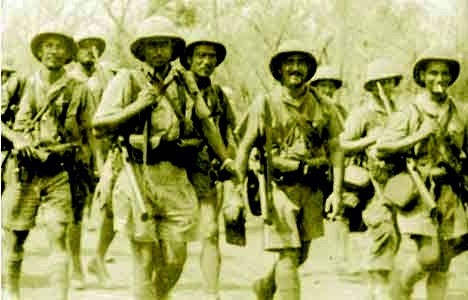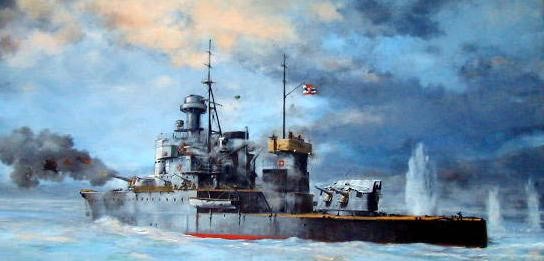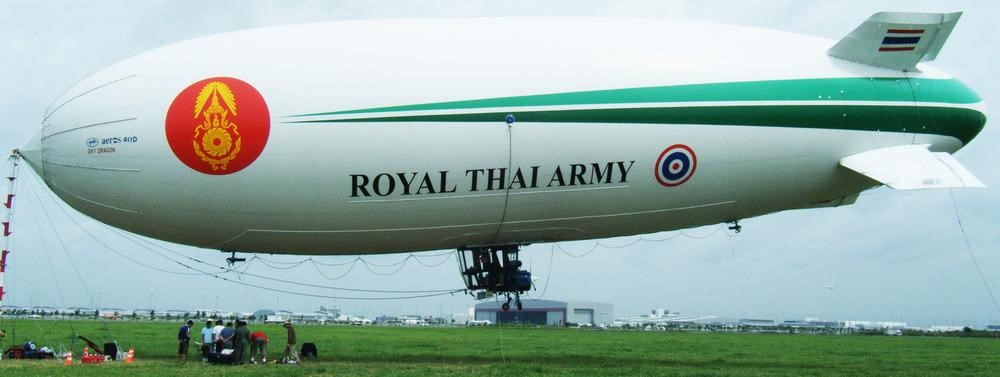Dr. Andrew McGregor
November 16, 2002
In 1940 the Vichy government of French Indo-China was isolated and threatened by the imperialist Japanese, the neighbouring Thais and by native rebel movements. The French had about 50,000 colonial and metropolitan troops stationed in the colony. They outnumbered the small French civilian population of 40,000 colonists in a territory of 25 million Indo-Chinese. The French collapse in the spring of 1940 resulted in the German occupation of 60% of France, but Marshall Pétain’s Vichy government retained control of the remainder, as well as France’s colonial empire. Indo-China was, however, cut off from re-supply from Vichy France. A British blockade proved effective, meaning that troops could not be rotated for the duration of the war, nor could parts be obtained for military equipment. Fuel supplies could also not be replenished so long as the petroleum-short Japanese Empire controlled the Asian theatre.
 Legionnaires of the 5e Régiment étranger d’infanterie (5e REI) during the Vichy campaign against Thailand
Legionnaires of the 5e Régiment étranger d’infanterie (5e REI) during the Vichy campaign against Thailand
Vichy diplomats attempted to persuade Germany to allow them to ship arms and equipment to Indo-China, appealing to the Germans on racial grounds, pointing out the possibility of the ‘white race’ losing ground in Asia. The Germans would promise only to speak to the Japanese. At the same time Vichy was fending off offers from the Chinese to occupy Indo-China to ‘protect’ it from the Japanese. Aware of China’s own irredentist claims in the area, the French doubted they would ever get their colony back if the Chinese were allowed in.
The Japanese deliver a shock
As France fell, the Japanese began to make demands of the Governor-General of Indo-China, General Catroux. When the General acceded to demands that rail traffic to China be stopped he was promptly replaced. Vichy named the loyal commander of the FNEO (Forces Navales d’Extreme-Orient), Vice-Admiral Jean Decoux, as Governor General. By September Decoux was facing far greater demands from the Japanese, including the right to station and transport troops through Indo-China, the use of selected airfields, and the evacuation of a hard-pressed Japanese division fighting in China through the port of Haiphong. An appeal to the Americans for help was poorly received.
Aware of his predecessor’s fate, Decoux hesitated, signing the agreement just before the Japanese ultimatum ran out. The Japanese division was tired of waiting, however, and proceeded to cross the border on September 22, 1940, attacking the Tonkinese cities of Dong Dang and Lang Son with tanks and infantry. The Japanese navy made landings along the coast, Haiphong was bombed, and the Japanese Air Force flew repeatedly over Hanoi. The Japanese offensive came as a shock to some senior French officers, who still believed in natural European superiority and often talked about taking tough action against the Japanese. Dong Dang fell immediately, and Lang Son fell two days later, with many of the locally raised colonial units breaking and running before their first experience of artillery and disciplined infantry attacks carried out by veteran soldiers. French intelligence had reported that the Japanese were demoralized, but it was the French who collapsed under pressure. Local villagers revealed French positions to the Japanese, French artillery fired on French positions, ammunition ran out quickly, and over a thousand Indo-Chinese troops deserted.
A statement issued by the Japanese emperor on October 5 called the Lang Son attack unfortunate but not important. The French prisoners were released, but 200 German legionnaires who had been separated from the other French prisoners were not released until the 13th of October. The pursuing Chinese army made numerous forays across the frontier, and the French administration remained fearful of a full-scale Chinese invasion until the end of the war. The French had lost 800 men in two days of battle with the Japanese.
Nationalist rebellions
The fall of Lang Son had almost immediate consequences for French rule. Discontented locals had witnessed how easily an Asian army defeated the whites. Vietnamese nationalist Tran Trung Lap was able to raise some 3,000 men in the Lang Son region, many of them deserters from the Indo-Chinese units defeated by the Japanese. Their arms were provided from French stocks captured by the Japanese. The returning French demonstrated they could still deal with a poorly trained rabble, and quickly drove the revolutionaries into the mountains, where planes and artillery hammered them. Tran Trung Lap was ambushed, and though he escaped the massacre of his men by machine-gun, he was shortly after captured and executed at Lang Son in December.
In the south of Vietnam, then known as Cochin China, an even more dangerous rebellion broke out in late November. Thai troops had begun to deploy along the Cambodian border and most of the garrisons in Cochin China had been sent to the frontier. Fighting broke out in the My Tho region and French police found themselves overwhelmed. The rebellion spread to Saigon and a number of southern provinces. A battalion of the Foreign Legion and a battalion of Tonkinese colonial troops on their way to Cambodia were diverted to the south and, with the help of artillery, air and naval detachments, quickly repressed the rebellion with utmost ruthlessness. The French had made their point, and could now send their forces west to deal with the Thais.
War with Thailand
The French now had to deal with a growth of militarism and Thai nationalism in neighbouring Thailand (the name was changed from Siam in 1938). Just as Germany sought to regain the territories lost in the Treaty of Versailles, Thailand was eager to retake the ethnic Thai lands along the Mekong River it was forced to cede to the French colony of Laos in 1904. In 1907 the French had also forced Siam to cede the largely Khmer provinces of Siemreap, Sisophon and Battambang to French Cambodia. The pro-Japanese government of Marshal Pibul Songgram sensed an exploitable weakness in the now isolated French colony, and began a military campaign to retake these territories after the French rejected demands for their return in October 1940.
The Thais had signed a non-aggression pact with the French in June 1940, but failed to ratify it after the collapse of metropolitan France. By October Marshal Songgram had mobilized 50,000 troops (in five divisions) and obtained 100 modern fighters, bombers and seaplanes from Japan. The Thai air-force was now three times the size of that available to the French, with the new aircraft added to the 100 American planes obtained between 1936 and 1938 (mostly Vough Corsairs and Curtiss Hawks). The Thai navy had also been equipped with modern ships and outclassed the French colonial fleet on paper at least. Border skirmishes began in November and the Thais crossed the Mekong in December. Hard-pressed elsewhere, the French could only commit fourteen battalions to the defence of Battambang Province.
On January 5, 1941, the Thais launched a full attack with artillery and aerial bombardment of French positions. The Thai offensive covered four fronts:
1) North Laos, where the Thais took the disputed territories with little opposition
2) South Laos, where the Thais crossed the Mekong by the 19th of January
3) The Dangreks Sector, where confused fighting went back and forth
4) Colonial Route 1 (RC 1) in Battambang province, where the heaviest fighting occurred.
The initial advance on the RC 1 was repulsed by the Cambodian Tirailleurs (riflemen). The main Thai column ran into a French counter-attack on January 16, colliding with the French at Yang Dam Koum in Battambang. The Thai force was equipped with Vickers 6-ton tanks while the French lacked any armour. The French counter-offensive had three parts:
1) A counter-attack on the RC 1 in the region of Yang Dam Koum
2) An assault by the Brigade d’Annam-Laos on the islands of the Mekong River
3) Operations by the naval ‘Groupement occasionnel’ against the Thai fleet in the Gulf of Siam
The main thrust of the offensive was by Col. Jacomy’s forces along the RC 1. The attack at Yang Dam Koum was a debacle from the start. The assault forces consisted of one battalion of Colonial Infantry (European) and two battalions of ‘Mixed Infantry’ (European and Indo-Chinese). The forest made artillery operations difficult, French aircraft never showed, leaving the skies to the Thai air-force, and radio communications were poor. The French transmitted orders using Morse code, perhaps explaining why the Thais often anticipated their movements. A complete rout was prevented when the Thais ran into a battalion of the Fifth regiment of Legion infantry at Phum Préau. The legionnaires were hit hard by a Thai armoured assault, but brought up two 25mm and one 75mm gun for use against the tanks. The motorized detachment of the 11th Regiment of Colonial Infantry reinforced the line, and three Thai tanks were destroyed, the rest deciding to retire. The diversionary assault on the Mekong was successful, but the largest battle of the war was to be fought in the Gulf of Siam.
Naval War in the Gulf of Siam
The French navy was all important in Indo-China, as with any overseas colony. The modest force had a virtually non-existent role in the great Asian war of 1941-45, being unable to resist either Japanese advances or Allied blockades, but they were nevertheless to have one great, unexpected battle before meeting an ignominious end. The fleet in Indo-China was divided into two parts with separate levels of responsibility. The FNEO was assigned responsibility for the overall defence of French colonies in Indo-China and the Pacific, while the Marine Indochine with its river gunboats was responsible for interior security in Indo-China.
With the land war going badly for the French, it was decided to send the small French fleet to the Gulf of Siam to engage a Thai naval force supporting the flank of the Thai advance. The Thai ships had been spotted lying at anchorage in the Koh Chang islands by a French navy flying boat. The French task-force (or Groupement occasionel) consisted of the light cruiser Lamotte-Piquet, the two colonial sloops Dumont d’Urville and Amiral Charner, and the WW1 vintage gunboats Tahure and Marne.
 HTMS Dhonburi at the Battle of Koh Chang
HTMS Dhonburi at the Battle of Koh Chang
During the night of January 16 the French ships closed in on the islands, dividing themselves into three groups to cover the exits from the island group. On the morning of the 17th the French roared in under cover of the mist to engage the Thais. The Thai ships included three Italian-built torpedo boats and the dual-pride of the Thai fleet, the two new Japanese-made armoured coastal defence ships with 6” guns, Donburi and Ahidéa. The French were surprised to find both coastal defence ships there, as they expected only the Ahidéa, but the Donburi had arrived the day before in a standard rotation. The French lost the advantage of surprise when an overeager Loire 130 seaplane tried to bomb the Thai ships. The Thais received the French with the opening salvoes of the battle at 6:14 AM. The Lamotte-Piquet quickly inflicted fatal damage on the Ahidéa with gunfire and torpedoes, forcing it to run aground. By 7 AM French guns had sunk all three torpedo boats.
The Donburi was spotted attempting to escape through the 200m high islands and the French cruiser set off in pursuit. The Donburi was set afire but continued to engage the cruiser and the sloops, which now began to pour fire into the Donburi. Badly damaged and listing to starboard, the Donburi eventually disappeared behind an island and the French broke off. Later in the day the Donburi was taken in tow by a Thai transport but capsized soon after. Throughout the engagement the French sailors were impressed by the courage of the Thai sailors under fire.
The French ships were unable to exploit their victory, however, due to the arrival of Thai Corsairs targeting the Lamotte-Piquet. Fierce anti-aircraft fire drove off the attacks and by 9:40 AM the French turned for home. In a brief but decisive engagement the Thai fleet had been destroyed at negligible cost to the French. It appeared at the time to be a sudden and dramatic reversal of French fortunes.
Aftermath
The Japanese had seen enough and accompanied an offer to mediate the conflict with the arrival of a powerful naval force off the mouth of the Mekong River to encourage negotiations. A tentative armistice was imposed on January 28, but Thai provocations on the frontier continued until a formal armistice was signed aboard the Japanese battleship Natori off Saigon. The extent of Thai-Japanese collaboration was revealed when a Japanese-imposed treaty between Vichy and Thailand was signed on May 9, 1941. The disputed territories of Laos, part of the Cambodian province of Siem Réap and the whole of Battambang were awarded to Thailand. The conflict had cost the French over 300 men and a further loss of prestige amongst its colonial subjects. European troops and material losses could not be replaced due to the blockade. The French garrison remained highly demoralized until the Japanese coup in 1945 destroyed the Vichy colonial army in Indo-China.
In the end the Thais fared little better. The Khmers largely evacuated the lost Cambodian territories, preferring French rule, and Thailand itself was soon occupied by its more powerful ally, the Japanese. American Flying Fortresses bombed Bangkok in 1942. The Thais declared war against the allies in 1944, but there was some confusion over whether the declaration was actually delivered to the US government, and after the war the Thai government certified the declaration of war as null and void. The uncomfortable affair was mutually forgotten. The disputed territories in Laos and Cambodia were returned to the new Gaullist government at the end of the war.
The French light cruiser Lamotte-Piquet was laid up shortly after the battle of Koh Chang due to the shortage of fuel. In 1945 the ship was bombed by American planes before being scuttled during the brutal Japanese coup of March 1945. The remaining naval force continued to escort convoys up and down the Vietnamese coast as best they could from 1941 to 1945. In their sudden seizure of Indo-China, the Japanese sank a number of French ships with shore fire, while the remainder were scuttled by their crews, who were then imprisoned. The French colonial armed forces in Indo-China had ceased to exist by the time the British and Chinese armies arrived after the Japanese surrender. It was the British and Chinese, rather than the men of Vichy, who would turn the colony over to Gaullist France at the end of World War II.
This article was first published on November 16, 2002 by Military History Online http://www.militaryhistoryonline.com/20thcentury/francosiamese/default.aspx#
FNEO – Forces Navales d’Extrême-Orient
| Lamotte-Piquet |
Light cruiser (Flagship) |
1926 |
9350 tons
8 6.1” guns |
Sunk by aircraft, Dec.1, 1945 |
| Dumont d’Urville |
Colonial sloop |
1933 |
2,600 tons |
Scrapped in 1958 |
| Amiral Charner |
Colonial sloop |
1933 |
2,600 tons |
Scuttled, March 10, 1945 |
| Tahure |
First-class sloop |
1919 |
850 tons |
Sunk by U.S. submarine, April 30, 1944 |
| Marne |
First-class sloop |
1916 |
601 tons |
Scuttled in the River Canthro, March 10, 1945 |
Siamese Naval Forces
| Dhonburi
(Domburi) |
Coastal defense cutter |
c. 1938 |
2,265 tons
4 8’ guns |
Capsized under tow, Jan.14, 1941 |
| Ahidéa
(Sri Ayuthia) |
Coastal defense cutter |
c. 1938 |
2,265 tons
4 8” guns |
Ran aground, Jan.14, 1941
Raised by the Japanese
Sunk by shore-fire, 1951 |
| Chonduri |
Torpedo boat |
|
470 tons |
Sunk, Jan.14, 1941 |
| Trat
(Trad) |
Torpedo boat |
|
470 tons |
Sunk, Jan.14, 1941 |
| Songhkli
(Songkhla) |
Torpedo boat |
|
470 tons |
Sunk, Jan.14, 1941 |
This chart was first published on November 16, 2002 by Military History Online http://www.militaryhistoryonline.com/20thcentury/francosiamese/navalforces.aspx
 The Royal Thai Army’s Airship (Aria International)
The Royal Thai Army’s Airship (Aria International)

